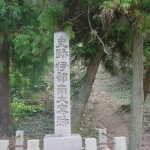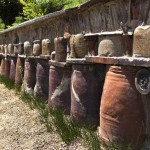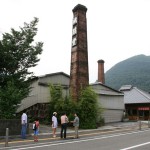It is said that Bizen Ware got its start from a change in the process of Sue Ware of the Kofun Era, and was produced in the Heian Era at the foot of Mt. Kuma as daily-use items such as bowls, plates, platters and roof tiles.

In the Kamakura Era, pots, jars and mortars were frequently made from clay which mainly consisted of mountain earth. However, from that time onwards, works with the characteristic reddish-brown surface of Bizen Ware were started to be created. From the end of the Muromachi Era, a clay gathered from the Inbe region called Hiyose came to be used, mass production using pottery wheels was made possible, and large semi-submerged cave kilns were made.

Afterwards in the Edo Era, there were protection and regulation of the fiefs, small-scale kilns were integrated, large-scale kilns of the north, south and west were built, and the six major pottery studios of Kimura, Mori, Tongu, Terami, Okyo and Kaneshige were arranged into a manufacturing system. However, tea pottery, everyday miscellaneous goods and other containers were also made from the Muromachi Era onwards. The making of these items in large kilns would continue up to the end of the Edo Era, but at that time, the production of porcelain goods in places like Kyoto, Arita and Seto started to flourish which would consequently affect Bizen Ware adversely.

The time from the Meiji Era to the beginning of the Showa Era was a difficult one, but even at that time, the flames of the kilns did not die out as various efforts continued. The man who brought the declining Bizen Ware back to its current prosperity was Toyo Kaneshige. In 1956, Kaneshige was proclaimed as a National Living Treasure or “a Bearer of Important Intangible Cultural Assets”. This was the catalyst for everybody put their efforts together and get themselves out of a very dark period in history. In addition, it was from this time that not just within Japan but even abroad, the popularity of the classically Japanese Bizen Ware increased and so after the passing of Kaneshige, Kei Fujiwara, Toshu Yamamoto, Yu Fujiwara, Jun Isesaki and other National Living Treasures started to turn out in great numbers.
Today, writers and potters alike will continue to create, step by step, until works of great individuality are made in a traditional style.
>> Characteristics
>> Potter
>> Photos
Article by Bizen Ware Ceramics Friendship Society
